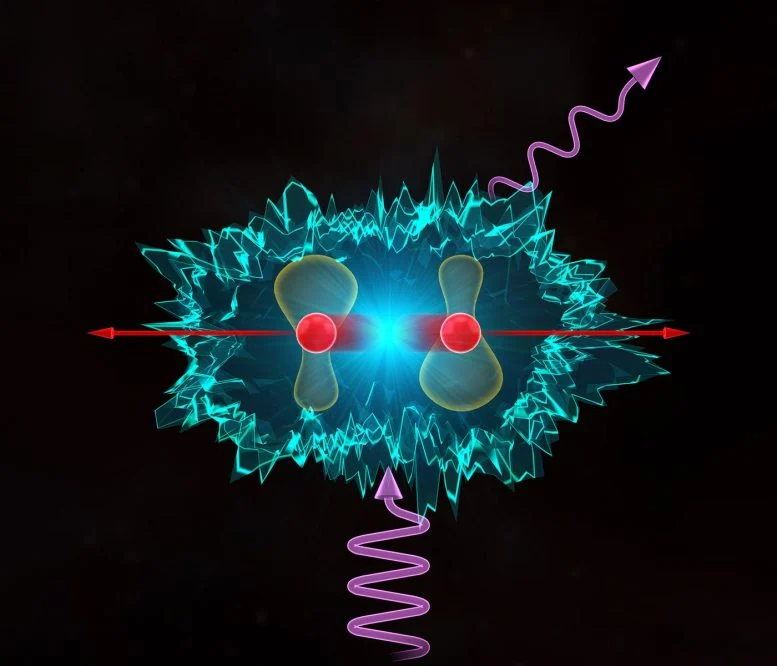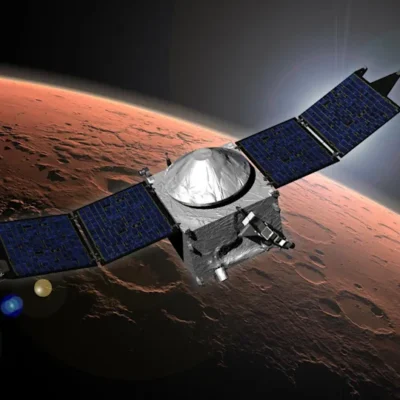In a pioneering study, scientists have developed innovative methods to control atomic collisions using optical tweezers, paving the way for advances in quantum computing and molecular science.
By carefully adjusting light frequencies and atomic energy levels, researchers mapped out how specific atomic properties influence collision outcomes. These findings bring scientists one step closer to precise quantum manipulation.
Unexpected Quantum Effects at Ultra-Cold Temperatures
When atoms collide, their structural characteristics—such as the number of electrons they possess or their nuclear quantum spin—play a crucial role in determining how they interact. This effect is amplified at temperatures approaching absolute zero, where quantum mechanics dominates. Under these extreme conditions, laser light can trigger atomic collisions, momentarily forming a molecular state before breaking apart and releasing significant energy. Despite their importance, the mechanisms behind these light-assisted collisions remain largely unexplored.
A new study, published in Physical Review Letters, sheds light on this phenomenon. Led by JILA Fellow and University of Colorado Boulder physics professor Cindy Regal, along with former JILA Associate Fellow Jose D’Incao (now at the University of Massachusetts, Boston), the research team devised novel experimental and theoretical methods to measure collision rates influenced by small atomic energy shifts. Their approach relies on optical tweezers—highly focused laser beams that trap individual atoms—allowing unprecedented precision in studying atomic interactions.
By deepening our understanding of these specialized collisions, the researchers aim to enhance control over atomic interactions, a fundamental step toward refining quantum simulations that model complex quantum systems using atom and molecule arrays.
Advancements in Optical Tweezer Research
JILA graduate student Steven Pampel, the study’s lead author, sought to determine how different conditions impact the rate of light-assisted collisions. The frequency of light in relation to atomic transitions plays a crucial role in the results of these interactions.
“Light-assisted collisions generate large amounts of energy compared to what ultracold atomic gases typically tolerate,” explains Regal. “While this energy often causes atoms to escape from traps, it can be harnessed and controlled for beneficial applications.”
Previously, Regal’s team and other research groups worldwide utilized this energy to study atom loading into optical tweezers. However, a deeper theoretical understanding of the collision process and its connection to atomic hyperfine structure—small energy shifts resulting from nuclear spin interactions—was lacking.
The fundamental model for light-assisted collisions, developed decades ago by JILA Fellow Allan Gallagher and MIT’s David Pritchard, primarily relied on large optical traps containing millions of atoms. In such settings, the same light used to confine atoms also drove their collisions, limiting control over light frequency and the quality of data researchers could obtain.
Precision Control of Quantum States
To measure collision speeds, Regal’s team prepared two rubidium atoms in an optical tweezer. They used a method that loads single atoms into separate tweezers before merging them into a single trap. Once merged, a carefully timed laser pulse induced collisions between the atoms.
This pulse excited the atoms, placing them in a quantum superposition state where it was unclear which atom had absorbed a photon. In this state, electronic forces acted over much greater distances than usual, imparting high kinetic energy to the atoms, causing them to escape the trap. This process resembles a game of quantum billiards, where a photon acts like a cue ball, striking two atomic “balls” simultaneously and sending them flying.
By systematically varying the laser frequency—the photon’s energy—the team measured how quickly atom pairs escaped the tweezer trap.
“We set the laser to a specific frequency, then adjusted the duration of the collisional light to observe how many atoms remained in the trap,” Pampel explains. “From this data, we determined how quickly collisions occurred and how atoms gained enough energy to escape. Repeating this process at different frequencies allowed us to map out the influence of hyperfine structure on these collisions.”
This marked the first time researchers quantitatively measured atom loss rates in direct relation to hyperfine energy effects.
Breakthrough in Collision Imaging Techniques
To accurately determine whether both atoms remained in the trap after a collision, the team developed a novel imaging technique. Traditional imaging methods in optical tweezers often inadvertently eject both atoms, making it difficult to distinguish between the effects of collisional light and imaging light.
“Our solution involved a specialized light-assisted collision method where, in most cases, only one atom was ejected,” Pampel says. “By detecting a single atom, we could infer whether two were originally present. This approach, commonly used for loading single atoms in tweezers, proved useful for controlled two-atom detection as well.”
In addition, the researchers created a theoretical model to interpret their results, particularly regarding how hyperfine states influence collision rates.
“Mapping out potential energy curves for colliding atoms in the presence of light and hyperfine interactions required more complex analysis than previous studies, which only considered atomic fine structure,” explains D’Incao.
Pampel adds, “We developed a collisional model that improves our understanding of how hyperfine-dependent molecular states influence collision rates and energy release. This model can also be adapted for atoms beyond rubidium, providing insights into other elements under similar conditions.”
Implications for Quantum Science and Future Technologies
Beyond solving a long-standing puzzle, these findings have broad implications for quantum technologies involving trapped neutral atoms, including quantum computing, precision measurement (metrology), and many-body physics. The ability to predict atomic collision behavior based on hyperfine structure could significantly enhance laser-cooling techniques, molecular quantum science, and the development of next-generation quantum technologies.
Reference: Quantifying Light-Assisted Collisions in Optical Tweezers across the Hyperfine Spectrum by Steven K. Pampel, Matteo Marinelli, Mark O. Brown, José P. D’Incao, and Cindy A. Regal, published 10 January 2025 in Physical Review Letters.
Funding: This research was supported by the Office of Naval Research, the National Science Foundation, the Department of Energy, the Quantum Systems Accelerator, and the Swiss National Science Foundation.





